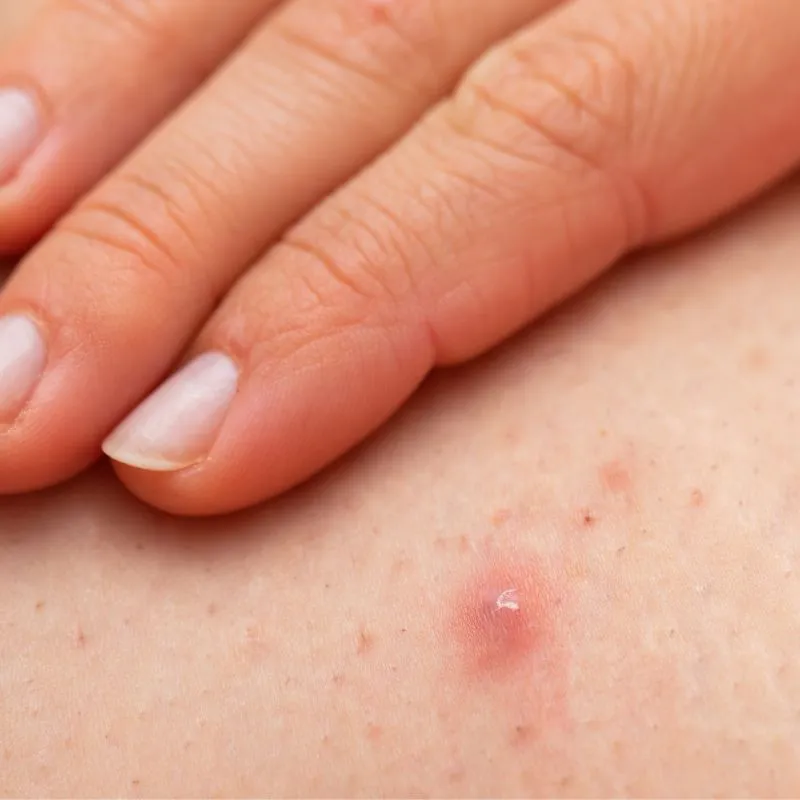How to Treat Folliculitis After Waxing: A Complete Guide for Professionals
Waxing remains one of the most popular and effective hair removal methods, providing smooth, long-lasting results. However, despite its many advantages, it can sometimes lead to minor skin issues—most commonly, folliculitis after waxing.
Folliculitis is a condition marked by red or white bumps, swelling, and sometimes pustules. It occurs when hair follicles become inflamed due to bacterial or fungal infections. While it’s typically mild, this condition can affect client satisfaction and comfort if not properly addressed.
As a waxing professional, knowing how to treat folliculitis after waxing is essential to provide optimal care, promote healing, and ensure client loyalty. In this guide, we’ll explore causes, treatment strategies, and prevention tips to help your clients maintain healthy, irritation-free skin.
What Is Folliculitis After Waxing?
Folliculitis occurs when hair follicles become irritated, inflamed, or infected after waxing. The hair is pulled from the root, leaving the follicle temporarily exposed—making it more susceptible to bacteria, fungi, or external irritants.
This skin reaction is especially common in sensitive areas such as the bikini line, underarms, face, chest, and back, though it may also affect the legs.
Types of Post-Waxing Folliculitis:
- Bacterial Folliculitis
Caused by bacteria (usually Staphylococcus aureus) entering open follicles, this form presents as red, swollen bumps, sometimes filled with pus. Clients may also experience itching or mild pain. - Fungal Folliculitis
Triggered by yeast or fungi, it causes clusters of itchy red or white bumps. It typically appears in warm, moist areas where fungi thrive.
It’s crucial to educate clients about these risks and recommend proper skincare routines. A timely and proactive approach can prevent complications and support quicker recovery.
How to Treat Folliculitis After Waxing
If a client develops folliculitis after waxing, here’s a multi-step plan to soothe the skin and promote healing:
1. Apply Warm Compresses
Using a clean, warm cloth on the affected area helps open pores, improve blood flow, and speed up healing. The heat can also reduce swelling and calm irritation.
2. Cleanse with Antibacterial Soap
Keeping the skin clean is key. Gently wash the area with a mild antibacterial or antiseptic lotion using lukewarm water. Avoid harsh scrubbing and stick to gentle movements.
3. Use Topical Antibiotic Ointments
For bacterial folliculitis, a topical antibiotic cream (like mupirocin) can help clear the infection. Always advise clients to consult a dermatologist before using prescription treatments.
4. Avoid Touching or Popping Pimples
Clients should never scratch or squeeze pustules, as this can worsen the infection and increase the risk of scarring. Instead, recommend soothing products that help protect the skin.
5. Apply a Post-Wax Soothing Product
A cooling post-wax gel with ingredients like menthol or aloe vera helps reduce inflammation and speeds up skin recovery. Italwax’s Ingrown Paste, enriched with tea tree oil and high-quality silicones, is ideal for sealing pores and preventing bacterial entry. It can be used at home for up to 48 hours post-waxing to reduce reactivity.
How to Prevent Folliculitis After Waxing
Prevention is always better than cure, especially for clients with sensitive skin. A proper pre- and post-waxing routine can significantly reduce the risk of folliculitis after waxing.
Exfoliate Before Waxing
Gently exfoliating the skin 24 hours before waxing helps remove dead skin cells and prevents follicle blockages. Recommend sugar-based or enzyme exfoliants for sensitive skin.
Use Soothing Post-Wax Products
For the legs, a special post-wax treatment can refresh the skin, reduce inflammation, and prevent ingrown hairs. Alternatively, a lotion with azulene (a calming flower extract) helps soothe reactive skin.
Avoid Tight or Synthetic Clothing
Tight garments can cause friction and promote sweating, creating an environment for bacteria to thrive. Suggest lightweight, breathable fabrics for at least 24 hours after waxing.
Keep the Area Clean and Dry
Good hygiene is critical. Clients should avoid intense workouts, saunas, pools, and hot tubs for 48 hours to reduce exposure to moisture and bacteria.
When to See a Doctor
In most cases, folliculitis after waxing resolves on its own. However, it’s important to know when to refer clients to a medical professional. Warning signs include:
- Increased redness, swelling, or pain
- Fever or chills
- Persistent pustules that don’t improve with at-home care
If any of these symptoms occur, a dermatological evaluation is strongly advised.
Conclusion
Folliculitis after waxing is a common but manageable condition. With the right care, professionals can help clients feel confident and comfortable throughout their waxing journey.
By educating clients on proper skincare routines, recommending soothing products, and emphasizing hygiene, you can significantly improve their post-waxing experience. And when needed, don’t hesitate to suggest a dermatologist visit for persistent symptoms.
With the right prevention and treatment strategies, waxing becomes a beauty ritual—not a source of skin stress.


 English
English Français
Français Norsk bokmål
Norsk bokmål Español
Español English (USA)
English (USA) Deutsch
Deutsch Hrvatski
Hrvatski Nederlands
Nederlands
